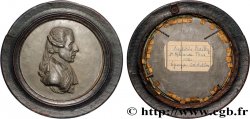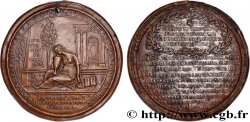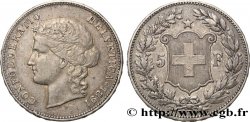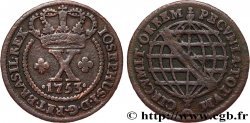fme_916635 - THE CONVENTION Fonte, Hommage à Jean-Paul Marat
250.00 €约 2045.00 CNY
数量
加入购物车

种类 Fonte, Hommage à Jean-Paul Marat
日期: n.d.
材质 bronze
直径 222 mm
模子方针 12 h.
重量 1429,15 g.
侧面 lisse
印模 sans poinçon
关于品相的说明
Patine hétérogène avec de hauts reliefs sur le buste. Faible usure. Métal des champs légèrement poreux
出版目录中的项代码 :
正面
正面的文字 MARAT / L’AMI DU PEUPLE // NE POUVANT / LE CORROMPRE / ILS L’ONT ASSASSINE.
正面的说明书 Buste habillé de profil à gauche coiffé d’un bonnet phrygien. Pendule et règle à droite.
背面
背面的文字 INCUS.
背面的说明书 anneau de suspension.
评论
Largeur : 208 mm.
Jean-Paul Marat (1743-1793) est un médecin, physicien, journaliste et homme politique français. Usurpateur de noblesse avant la chute du régime monarchique, il devient député montagnard à la Convention à l’époque de la Révolution. Son assassinat par Charlotte Corday permet aux hébertistes de faire de lui un martyr de la Révolution et d'installer pendant quelques mois ses restes au Panthéon (cf. wikipedia).
Width: 208 mm. Jean-Paul Marat (1743-1793) was a French doctor, physicist, journalist, and politician. A usurper of nobility before the fall of the monarchical regime, he became a Montagnard deputy to the Convention at the time of the Revolution. His assassination by Charlotte Corday allowed the Hébertists to make him a martyr of the Revolution and to install his remains in the Panthéon for a few months (see Wikipedia).
Jean-Paul Marat (1743-1793) est un médecin, physicien, journaliste et homme politique français. Usurpateur de noblesse avant la chute du régime monarchique, il devient député montagnard à la Convention à l’époque de la Révolution. Son assassinat par Charlotte Corday permet aux hébertistes de faire de lui un martyr de la Révolution et d'installer pendant quelques mois ses restes au Panthéon (cf. wikipedia).
Width: 208 mm. Jean-Paul Marat (1743-1793) was a French doctor, physicist, journalist, and politician. A usurper of nobility before the fall of the monarchical regime, he became a Montagnard deputy to the Convention at the time of the Revolution. His assassination by Charlotte Corday allowed the Hébertists to make him a martyr of the Revolution and to install his remains in the Panthéon for a few months (see Wikipedia).








 对产品描述纠错
对产品描述纠错 打印
打印 分享我的选择
分享我的选择 提问
提问 Consign / sell
Consign / sell
 产品介绍
产品介绍















